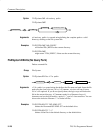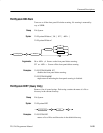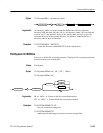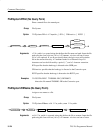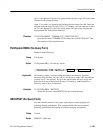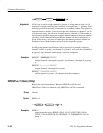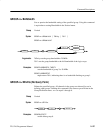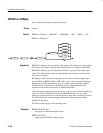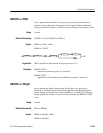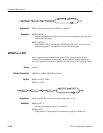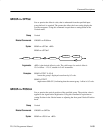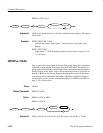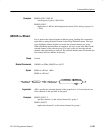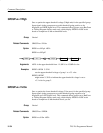
Command Descriptions
2–128
TLS 216 Programmer Manual
GROUP<x>:DISplay
Sets or queries the display mode for the group.
Vertical
GROUP<x>:DISplay { ANALOGAll | ANALOGSel | BUS | TIMIng | OFF }
GROUP<x>:DISplay?
ANALOGAll
ANALOGSel
BUS
TIMIng
OFF
DISplay
:
<Space>
?
GROUP
<x>
ANALOGAll displays each waveform in the group as the analog of its input signal.
Use Analog All mode to measure the actual response of a group of waveforms.
ANALOGSel displays only the selected waveform in a group as the analog input
signal. Use Analog Select mode to measure the actual response of the selected
waveform in a group.
BUS displays each waveform in the group as one or more of three digital logic
levels defined as HIGH, LOW, or MID. The levels of each waveform displayed
depends on how the instantaneous level of its input signal compares with two
threshold levels you define. Use BusForm mode to measure the idealized
response of waveforms with respect to defined thresholds.
TIMIng displays each waveform in the group as one or more of three digital logic
levels, as is done for BusForm. However, unlike BusForm, the logic scope
offsets the ground reference of each waveform so they skew vertically on screen.
Use Timing mode to measure timing relationships between the waveforms
included in the group.
OFF turns off the display of the selected group.
GROUP3:DISPLAY BUS
sets group 3 to BusForm display mode.
GROUP1:DISPLAY?
might return ANALOGALL display mode.
Group
Syntax
Arguments
Examples



